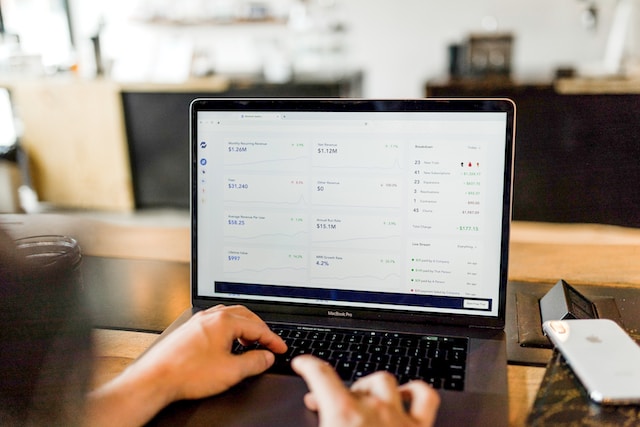
Definition
PPC stands for “Pay-per-click,” which is a digital marketing model where advertisers pay each time a user clicks on one of their ads. Essentially, it is a way of buying traffic to your website rather than attempting to “earn” that traffic organically through search engine optimization or other means.
The advertiser bids on specific keywords or phrases that they want to target, and their ads will appear on search engine results pages or on websites that are part of a display network. Advertisers only pay when someone clicks on their ad, which means they are only paying for traffic that is actually being directed to their website.
It can be very effective for businesses looking to increase their online visibility and drive traffic to their website. However, it requires careful planning and execution to ensure that the ads are targeted effectively and that the budget is being spent efficiently.
Table of Contents
History of PPC
The history of PPC can be traced back to the mid-1990s, when search engines such as Yahoo! and AltaVista started selling ad space on their search results pages. However, the concept of paying for ad placement dates back even further, to the early days of print and broadcast advertising.
Google launched its own advertising platform, AdWords (now known as Google Ads), in 2000. AdWords allowed advertisers to bid on specific keywords and target users based on their search queries, as well as their location, language, and other factors. Advertisers only paid when someone clicked on their ad, which made the model more cost-effective and accountable than traditional advertising methods.
Over the years, advertising has evolved to include a wide range of ad formats and targeting options. For example, social media platforms such as Facebook and LinkedIn have their own PPC advertising options that allow businesses to target users based on their interests, demographics, and behaviors.
How Does PPC Works
PPC works by allowing advertisers to bid on specific keywords or phrases that they want to target with their ads. The ads will then appear on search engine results pages or on websites that are part of a display network, and advertiser will pay each time someone clicks on their ad.
Keyword Research: The advertiser identifies the keywords or phrases that they want to target with their ads. This involves researching the search terms that their target audience is using and identifying the keywords that are most relevant to their products or services.
Ad Creation: The advertiser creates ads that are designed to attract clicks and conversions. Ads typically include a headline, a description, and a call-to-action that encourages users to click through to the advertiser’s website.
Bidding: The advertiser sets a maximum bid for each keyword that they want to target. This is the maximum amount that they are willing to pay for a click on their ad.
Ad Placement: The search engine or display network will determine which ads to show based on a variety of factors, including the bid amount, the relevance of the ad to the search query or website content, and the ad’s historical performance.
Clicks and Conversions: When a user clicks on the ad, they are directed to the advertiser’s website. The advertiser pays for each click, but the ultimate goal is to convert those clicks into sales or leads.
Benefits of PPC
Targeted Advertising: Paid ads allows businesses to target their ads to specific demographics, geographic locations, and keywords. This ensures that the ad is shown to users who are most likely to be interested in the product or service being offered.
Measurable Results: Paid campaigns provide detailed metrics on ad performance, such as clicks, impressions, conversions, and cost-per-click. This data can be used to make informed decisions and optimize the campaign for better performance.
Cost-Effective: Paid campaigns can be set up to fit any budget, and advertisers only pay when someone clicks on their ad. This means that businesses can control their spending and avoid wasting money on ineffective advertising.
Quick Results: Unlike SEO, which can take months to generate results, Pay Per Click campaigns can start generating traffic and leads within hours of launching the campaign.
Brand Visibility: Even if a user doesn’t click on the ad, seeing it can increase brand awareness and create a positive impression of the business.
Flexibility: PPC campaigns can be easily adjusted and optimized to improve performance. Advertisers can adjust targeting, bidding, and ad copy to improve results in real-time.
Best Practice of PPC
Set Clear Goals: Before starting your campaign, define what you want to achieve, whether it’s more website traffic, leads, sales, or brand awareness. Your goals will determine your strategy and help you measure your success.
Conduct Thorough Keyword Research: Use tools like Google Keyword Planner to identify relevant keywords and phrases that your target audience is searching for. Focus on keywords that are relevant to your business and have a high search volume and low competition.
Create Targeted Ad Groups: Organize your ads into targeted ad groups based on specific keywords and themes. This allows you to create ads that are highly relevant to the user’s search query and can improve your ad’s quality score.
Write Compelling Ad Copy: Your ad copy should be clear, concise, and persuasive. Use action-oriented language and include a call-to-action that encourages users to click on your ad.
Optimize Landing Pages: Ensure that the landing page your ad directs users to is relevant to the ad copy and offers a clear path to conversion. Optimize your landing page for speed, mobile responsiveness, and user experience.
Continuously Monitor and Optimize: Regularly review your campaign performance and adjust your bidding, targeting, and ad copy as needed. Use data to identify areas for improvement and test different strategies to improve performance.
Consider the User Experience: Ensure that the user experience is smooth and seamless, from the ad click to the conversion. Consider factors such as page load time, ease of navigation, and form length when optimizing your landing pages.
Future of PPC
Automation: Paid platforms are increasingly incorporating automation tools, such as automated bidding and ad creation, to improve campaign performance and reduce manual labor.
Artificial Intelligence (AI): AI-powered tools are being used to optimize ad targeting, personalize ad content, and analyze data to identify new targeting opportunities.
Voice Search: As voice search becomes more prevalent, PPC advertisers will need to optimize their campaigns for voice search queries, which may require a different approach to keyword research and ad copy.
Video Ads: Video ads are becoming more popular, particularly on social media platforms, and PPC platforms are starting to offer more options for video ad targeting and bidding.
Privacy Changes: Changes to privacy regulations, such as Apple’s recent changes to its iOS privacy policies, may impact the ability of paid advertisers to target users based on their behavior and preferences.
Conclusion
PPC advertising is a key component of many digital marketing strategies, and it continues to evolve as new technologies and platforms emerge. It can be a highly effective way for businesses to reach their target audience, generate leads and sales, and achieve a strong return on investment. Advertisers who stay up-to-date with these trends and adapt their strategies accordingly will be better positioned to succeed in the evolving PPC landscape.




Leave a Reply